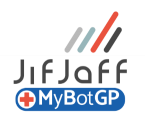Integrating automation technologies is becoming increasingly crucial in the rapidly evolving sector of NHS primary care. Recognising that not all automation solutions offer the same value or effectiveness is essential.
As automation becomes more prevalent in primary care settings within the NHS, a common misunderstanding has arisen: the assumption that all companies offering automation services are fundamentally the same merely because automation features prominently in their promotional materials. This misconception can lead to less-than-ideal investment choices, with primary care practices potentially selecting automation services that don’t fully meet their specific needs, resulting in vastly different outcomes.
Dedicated vendor products, like “MyBotGP” for efficient pathology filing, stand out for their ability to cater precisely to the unique demands of primary care in the NHS. These solutions are not just automation software; they are tailor-made tools designed from the ground up to enhance primary care services. MyBotGP, for instance, epitomises this approach. It can be swiftly implemented—downloadable and operational within an hour—underscoring its simplicity and high efficiency. As a vendor-developed product, MyBotGP is crafted to excel in one key area: automating pathology filing with precision and utilising advanced algorithms to discern normal from abnormal pathology test results, thereby streamlining a process that traditionally requires significant manual input.
In contrast, generic automation solutions offered by resellers lack this specialised focus. These generic tools are like blank canvases, requiring significant customisation and coding to even begin addressing the specific needs of primary care in the NHS. This path necessitates a hefty initial investment in both time and resources, including the development of custom solutions and a robust technical support framework, not to mention the ongoing challenge of updating these systems to keep pace with the changing healthcare landscape.
Choosing between a purpose-built, primary-care-oriented product like MyBotGP and a more generic, customisable automation solution underscores a critical decision for NHS primary care practices. Opting for a solution specifically designed for the primary care environment brings immediate advantages: quick setup, ease of use, and functionalities that directly address the workflows and challenges unique to NHS primary care.
This starkly contrasts the resource-intensive nature of managing generic automation tools, which can distract from the core mission of NHS primary care providers – unless this is something you want to do.
In conclusion, you must be sure about what you are thinking about purchasing in relation to:
- How much time can you allocate to getting it ready (do clinicians and admin teams need to define the logic and functionality)
- When do you need it live i.e. the robot and then how it logs into your practice
- How do you update changes, quickly
- Who will look after it
In the dynamic arena of NHS primary care automation, selecting the right tool for the task is crucial. Products are evolving quickly, and using purpose-built vendor products are now available. They represent the optimal choice for practices, PCN and Federations eager to leverage automation without the burden of becoming technology experts. It’s as simple as emailing 50 links to 50 practices; five minutes later, MyBotGP is downloaded, and each can apply their own rules within an hour or two – which is essential for Primary Care and be up and running.
